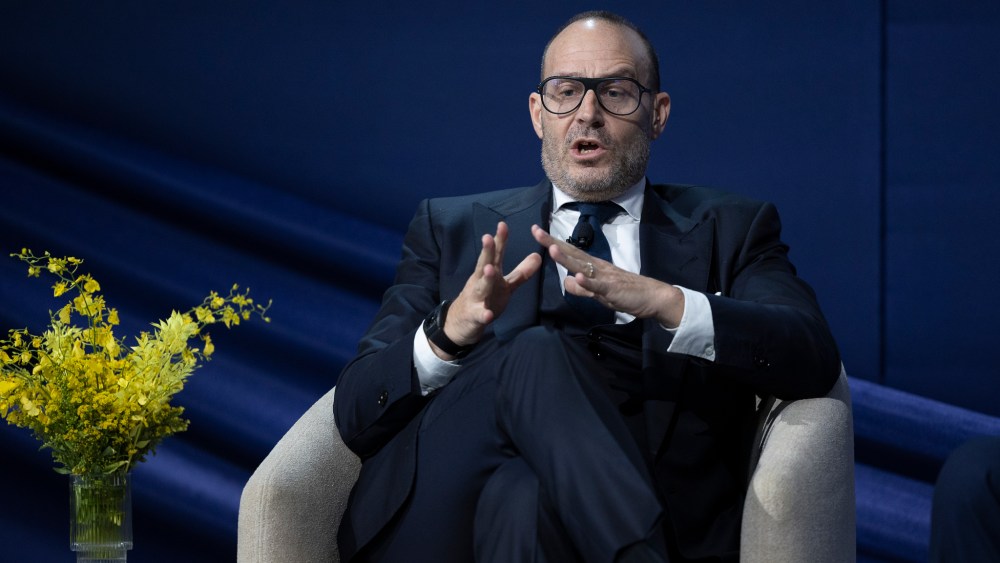Updated 11:39 a.m. ET Aug. 8
Saks Global has buttoned up its latest financing package early.
The retailer said it received $300 million in connection with its debt exchange offer on Friday, rounding out the $600 million package it revealed in late June.
About 98 percent of the eligible bondholders agreed to exchange their notes.
The deal could bring the temperature down on the Saks financial drama — at least for now.
You May Also Like
To buy Neiman Marcus Group, Saks took on $2.2 billion in debt from bondholders in December, just as Wall Street was feeling giddy over what many hoped would be more business-friendly policies from a second administration of U.S. President Donald Trump.
But when the reality of having Trump back in the White House led to a trade war with the world and the retail outlook dimmed, bondholders got spooked, particularly since a little-noticed provision in the bond prospectus allowed Saks to pile as much debt as it wanted onto its Fifth Avenue flagship.
Saks was already fending off vendors over slower payment terms and late back payments when a meltdown in the bond price added a sense of uncertainty — again — to the company and its finances. The retailer’s bonds traded at around 30 cents on the dollar for a time, but the company was able to negotiate a deal with some bondholders that eventually brought along the rest of the pack.
Now Saks is limited in how much debt the Fifth Avenue flagship can carry, leaving the building to stand as collateral for the bondholders in the event of a bankruptcy.
While many lenders and vendors to the company have been worrying over the potential of a bankruptcy for months, the retailer clearly sought to present the completion of the exchange as the final turning of the page on what’s been an uncertain and disruptive time.
Marc Metrick, chief executive officer, said: “With this transaction, we are embarking on Saks Global’s next chapter, with the financial flexibility to drive long-term value and growth for our stakeholders, particularly our brand partners. Our bolstered liquidity position, combined with our improved inventory flow and the work we have done to strategically integrate our businesses, positions us to continue executing on our strategy to advance the luxury shopping experience for our customers. We thank our bondholders for their continued confidence in our business.”
Metrick works closely with Saks Global’s executive chairman Richard Baker, who for years dreamed of buying Neiman Marcus and combining the two luxury department store powerhouses.
Together they have a vision that has lots of moving parts — from the new terms with vendors to a Saks presence on Amazon and a new single operating structure for the two chains.
But in the run-up of the deal and this year, vendors complained, bitterly at times, about not being paid for shipments, in many cases not for several seasons. And while Saks promised to make good on its bills — and some vendors have been paid — other suppliers have continued to privately complain that the money is always on the way, but still slow to arrive.
A source close to Saks said of the finalization of its latest financing package: “Now you’re going to not hear from brands anymore about not getting paid. You’re not going to hear from brands anymore about concerns. You’re not going to hear anymore from that side of the equation.”
But the world might well be hearing a little more about Saks’ finances before the spotlight will be able to the big luxury retail “reset.”
That’s because debt watchdog Standard & Poor’s previously said it viewed the financing as “tantamount to a default” since bondholders “will receive less value than they were initially promised and will rank lower in terms of priority than the new money notes.”
S&P said it expected to lower its rating on Saks to “selective default” or “default” after the financing was completed.
That “selective default,” if were to come, is a technical distinction that stems from the bonds being exchanged for new debt below par.
The new bonds have not yet been rated.
Now Metrick and Baker have to convince the market that the they’ve solved the Saks financial equation.



